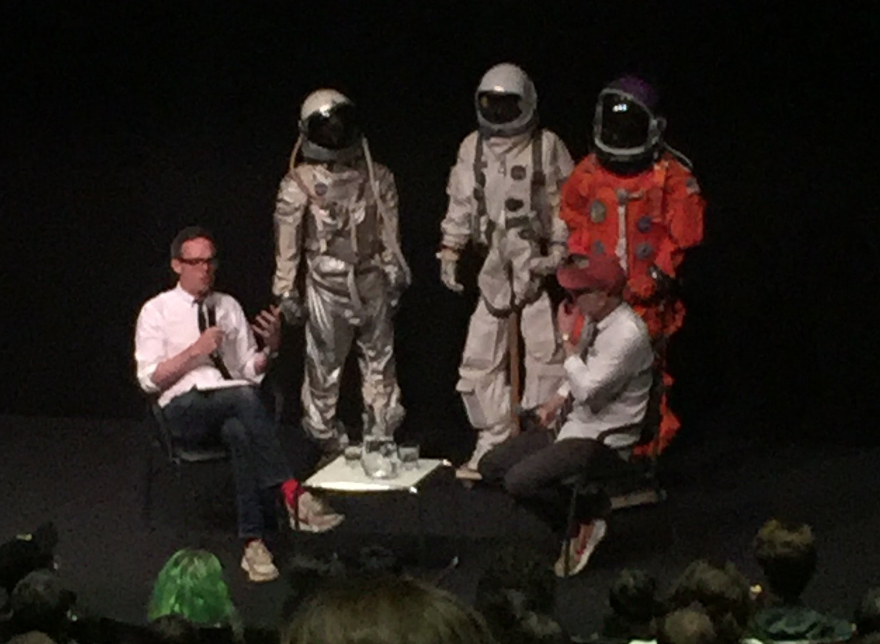ATC Revisited: Adam Savage

Recap by KC Forcier, the 2018-2019 Graduate Liaison for the Art, Technology, and Culture Colloquium.
Fact and Fiction: Wrapping Up the 2018-2019 Arts, Technology and Culture Colloquium
The final event in the 2018-2019 Arts, Technology, and Culture Colloquium was a wide-ranging conversation on the interpenetration of fact and fantasy, on space as a speculative place, and on the real world impact of fictional designs. BCNM hosted a discussion between Adam Savage, co-host of the popular MythBusters television series, and Nicholas de Monchaux, outgoing BCNM Executive Director and author of Spacesuit: Fashioning Apollo.
Prior to MythBusters, Savage spent a decade designing props and special effects for George Lucas’ Industrial Light and Magic - a career which effectively required him to take the fictional and transform it into the real. Savage sees this as a throughline in his life - since childhood he has been tinkering and building, “gathering skills that allow him to take what's in his brain and make it real.” This is the work of the designer, and de Monchaux and Savage spoke about the role of fictional speculation in real world design, and particularly in the design of the iconic NASA spacesuit.
The two speakers were joined on stage by three functioning replicas of historical spacesuits that Savage has created. The first of these was a silver suit based off the design of the earliest NASA spacesuits. The silver coating had much more to do with the influence of science fiction than with practicality: as De Monchaux pointed out, in space the silver coating reflects the sun to such an extent that “it was like a disco ball in a tanning salon.” In subsequent designs the spacesuit was all white, and suddenly, “All of Buck Rogers’ clothing went from silver to white, the spacesuits in Kubrick’s 2001 were white,” de Monchaux observed.
The spacesuit is an apt focal point for a discussion on fact and fiction. As Savage pointed out, costumes always have the ability to transform, whether a child’s halloween getup, or a superhero’s armor. A spacesuit is just one of the more dramatic examples of something humans have fashioned to make them more than they are. The spacesuit, and the space program itself, were made possible in part by the imaginative drive of science fiction. As de Monchaux observed, “The territory of speculation and the territory of action never as far removed as we might imagine.”
